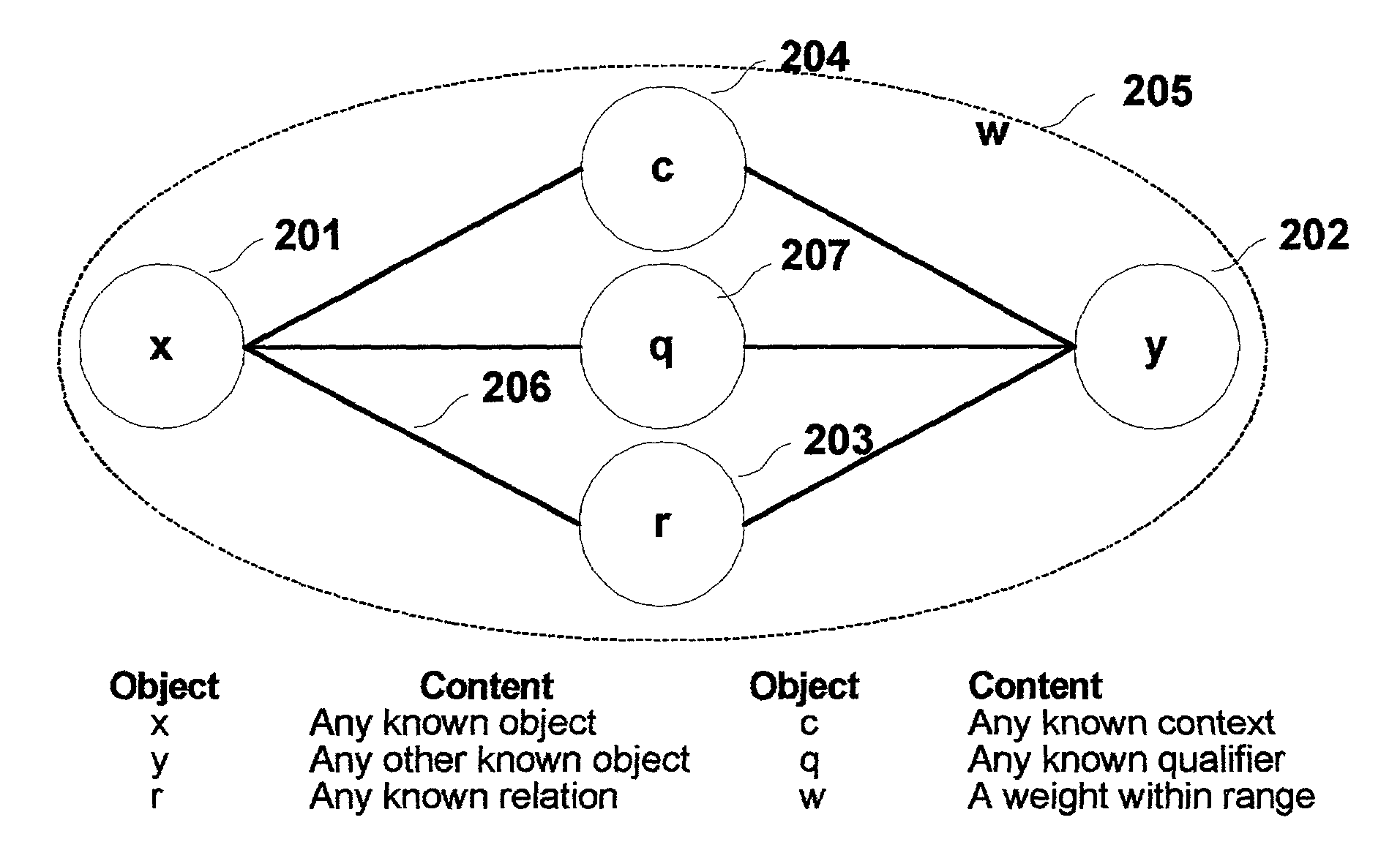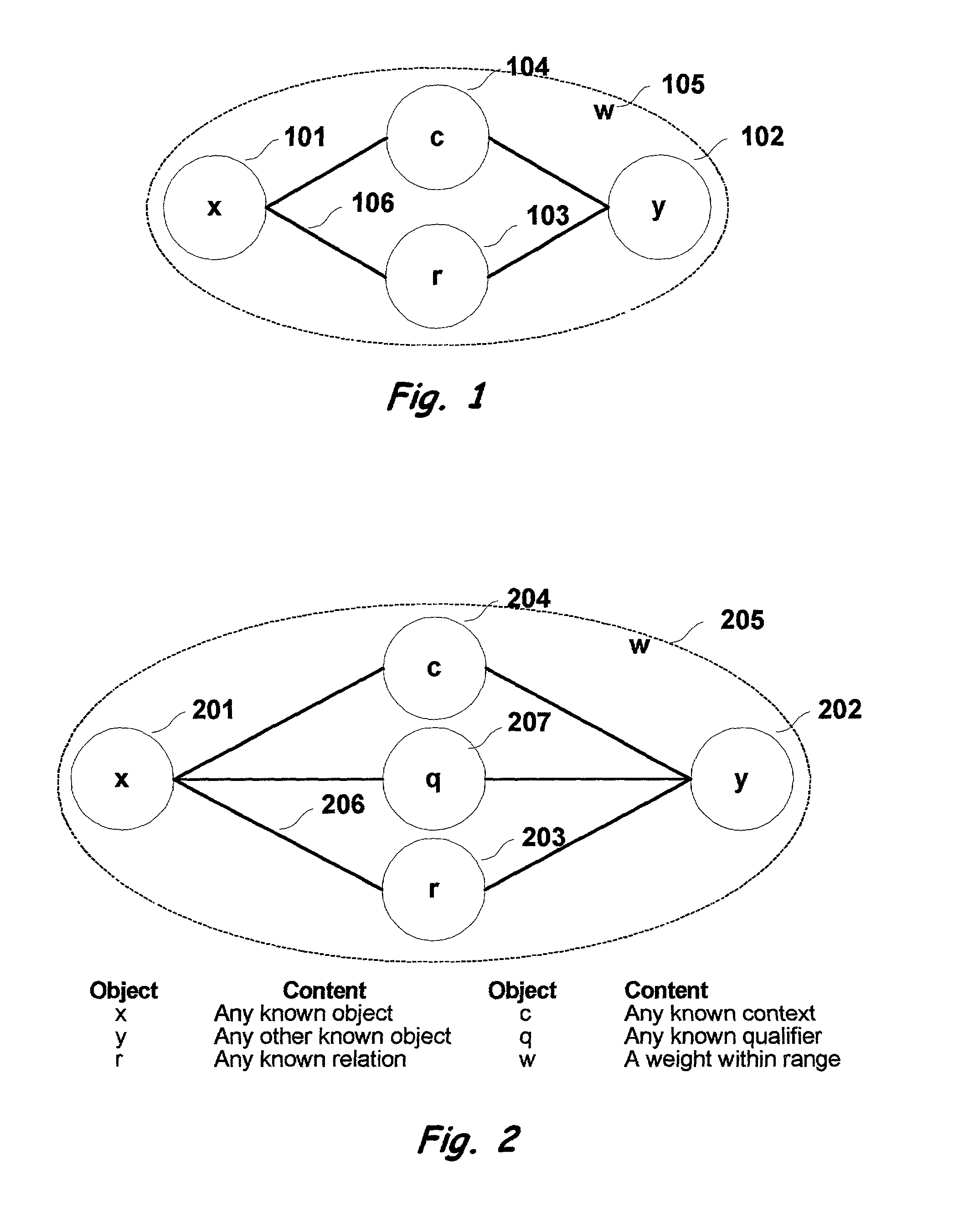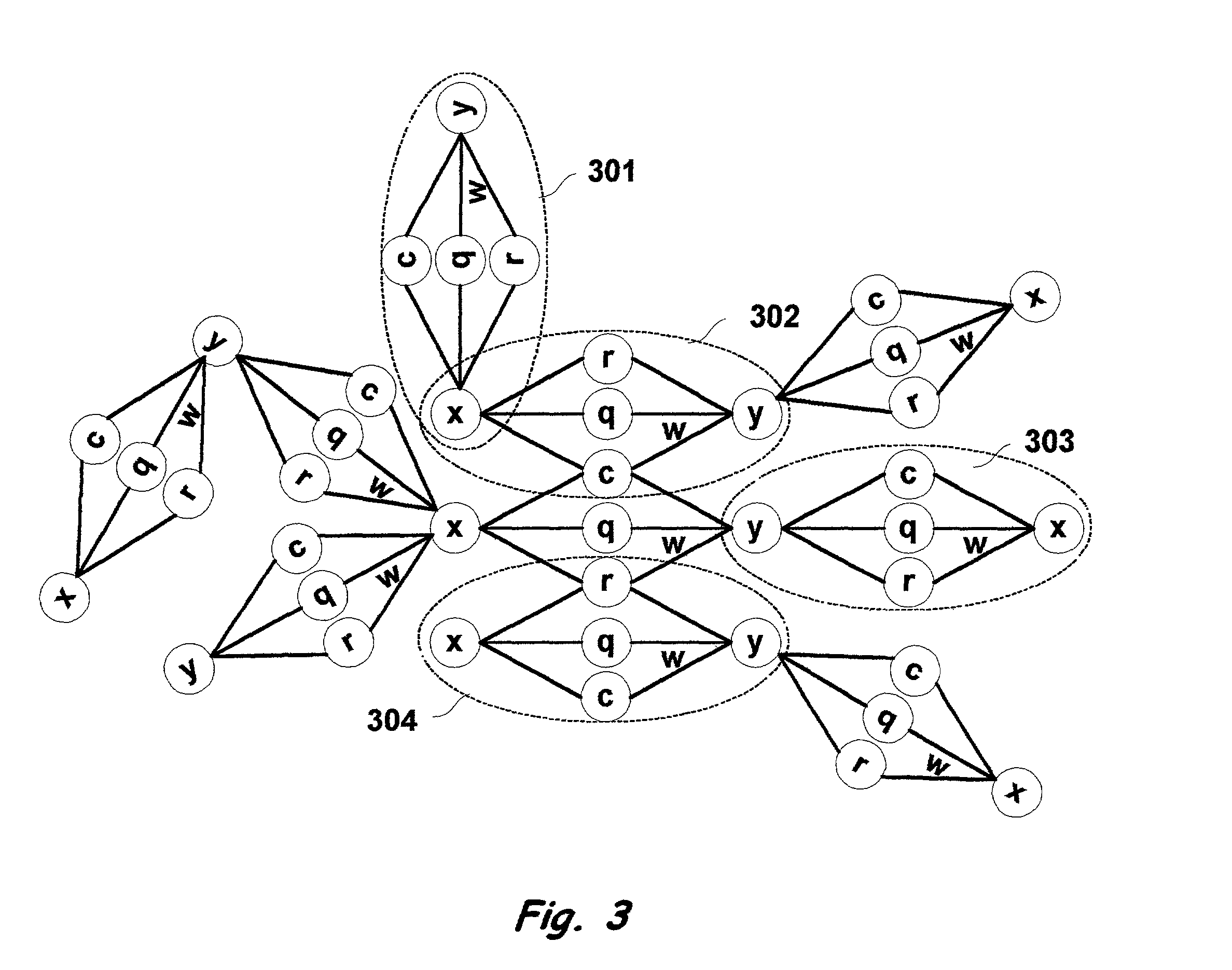Multi-dimensional method and apparatus for automated language interpretation
a multi-dimensional, language technology, applied in the field of natural language understanding, can solve the problems of unacceptably long processing time, unpractical list management, and high number of rules required to express the complexity of language, and achieve the effects of increasing the ability of the interpreter, increasing the number of nodes and connections, and increasing the accuracy of interpretation
- Summary
- Abstract
- Description
- Claims
- Application Information
AI Technical Summary
Benefits of technology
Problems solved by technology
Method used
Image
Examples
Embodiment Construction
[0100]The invention includes a multi-dimensional natural language processing (NLP) computational system with components and processes that understand and act upon spoken, written, and other forms of human language. The system operates on real-world knowledge stored in a distributed knowledge network (FIG. 3) that exhibits neural network-like structure and content, and uses algorithms to mimic certain brain functions (FIG. 12). The algorithms are preferably optimized to rapidly access and process stored knowledge to interpret the meaning of human language text, and / or perform further processing such as initiating searches or automated business functions, or translating the human language input text from one language to one or more other languages.
[0101]The invention embodies a multi-dimensional knowledge network in which each grouping of objects forms a proposition describing real-world knowledge. These propositional groupings consist of objects, including lexical (402) and / or non-le...
PUM
 Login to View More
Login to View More Abstract
Description
Claims
Application Information
 Login to View More
Login to View More - R&D
- Intellectual Property
- Life Sciences
- Materials
- Tech Scout
- Unparalleled Data Quality
- Higher Quality Content
- 60% Fewer Hallucinations
Browse by: Latest US Patents, China's latest patents, Technical Efficacy Thesaurus, Application Domain, Technology Topic, Popular Technical Reports.
© 2025 PatSnap. All rights reserved.Legal|Privacy policy|Modern Slavery Act Transparency Statement|Sitemap|About US| Contact US: help@patsnap.com



